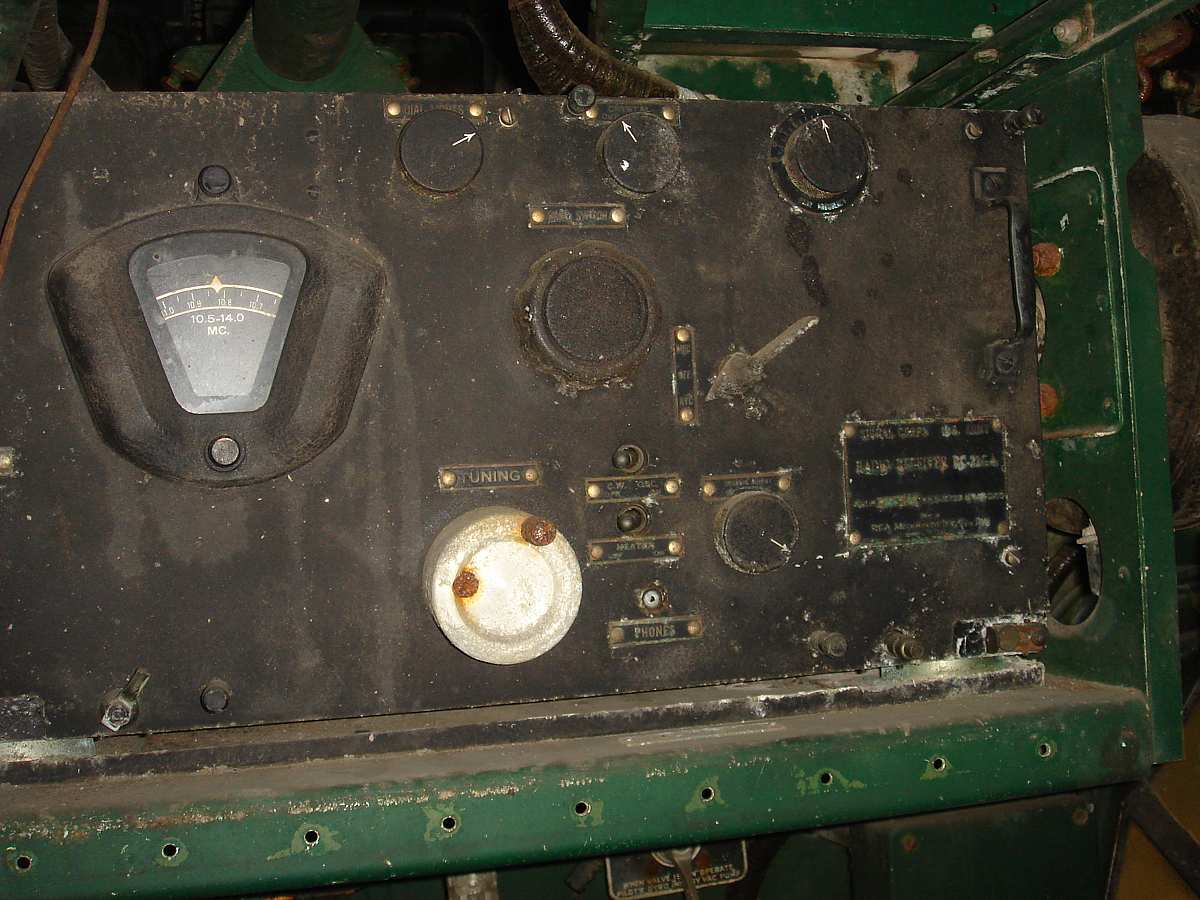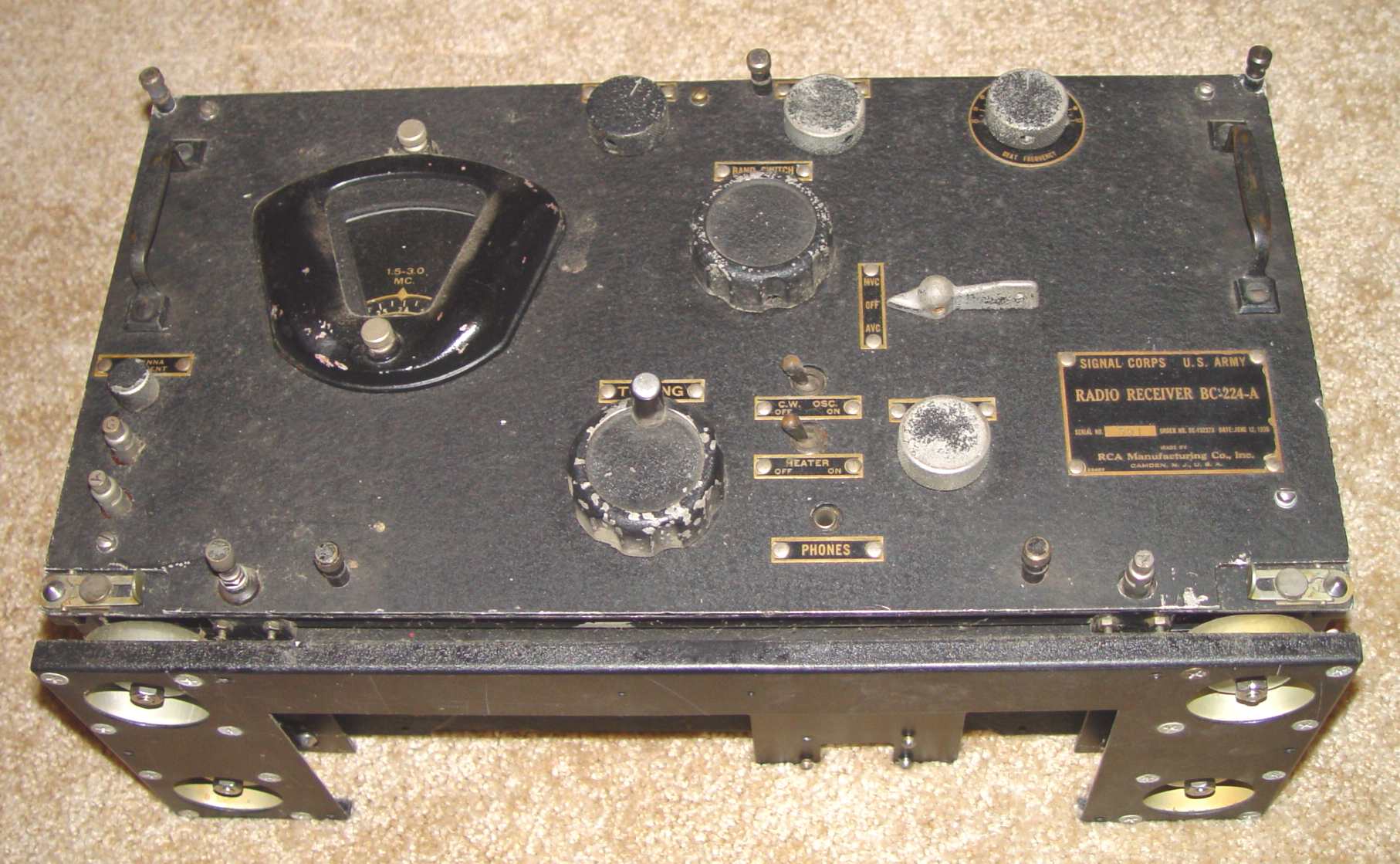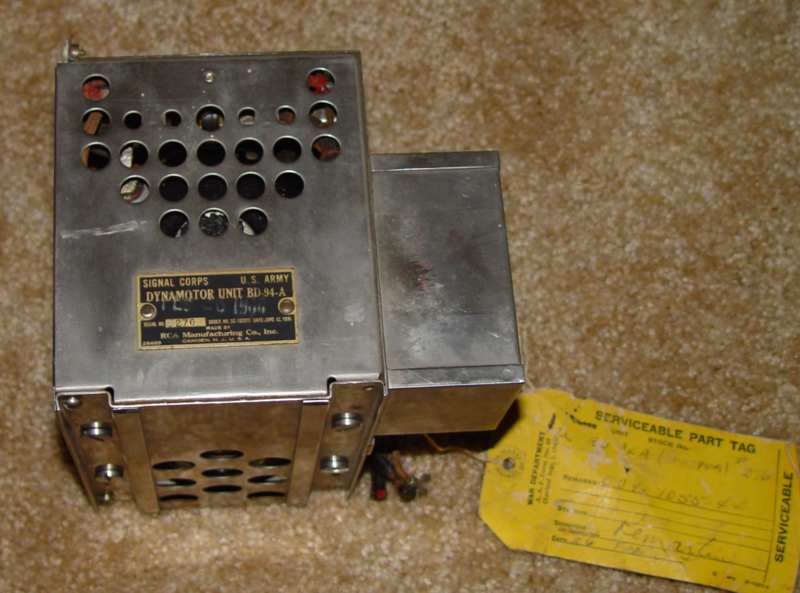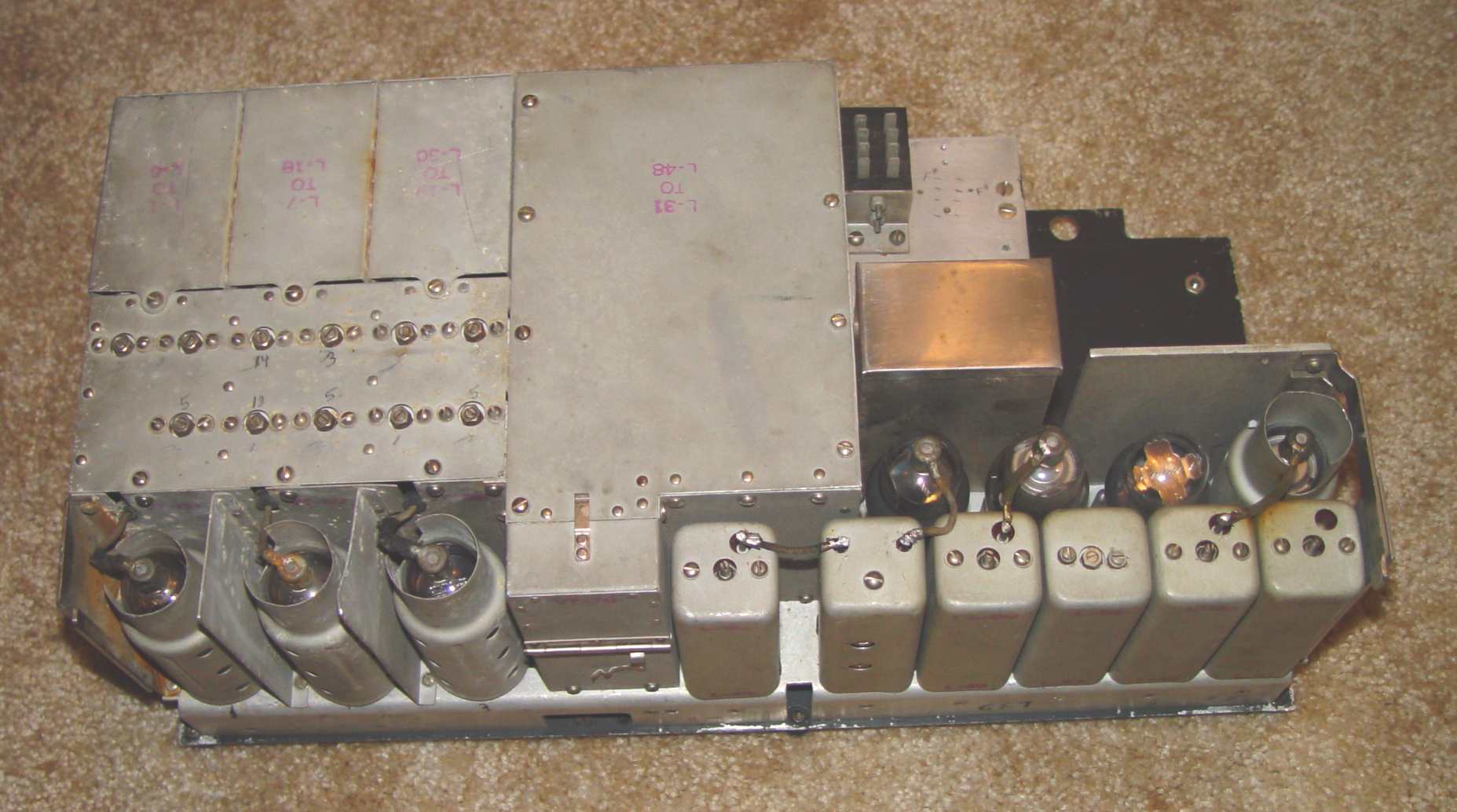
BC-224-A radio receiver
The mid to late 1930s reflected a curious mixture of old and new thinking in aircraft radios, led by brilliant engineers in such companies as Aircraft Radio Corporation and RCA. The example below should endear itself to every radio amateur growing up in the 1940s or 1950s, because it was the first of the BC-348 series of aircraft receivers. A close look at its front panel will reveal the same controls that are on all the later BC-224/348s, with the addition of a "heater" switch that provided power to the thermostatically regulated local ("heterodyne") oscillator compartment to provide stability at high altitudes, and some relocation from the more familiar positions of the others. (The BC-348-J, N, and Q also deleted the antenna alignment knob, of course.) This innovative receiver has a circuit diagram that looks very similar to its later counterparts, as well. There was a curious inclusion of a short transmission line between the left and right side of the receiver along the bottom edge of the front panel, presumably to make antenna connections easier on some aircraft installations. A short wire from the "A" terminal on the left to an inexplicaby different shaped terminal 45° downward from it was required to connect the transmission line. The familiar PL-Q103 and PL-P103 eight pin Jones style power plugs were identical to the later models, and though the FT-154 shock mount did not have the same depth as the later FT-154-*, it appears identical to the casual glance.

The similarity to the later evolution is striking. The use of basically the same knobs that were used on thousands of its progeny cements the relationship.

Installed in a typical setting, a BC-224-A (above) in NASM's unrestored O-47A observation aircraft shows its age, but also the ambience of an operational aircraft communications receiver. The tuning knob has suffered from deterioration of its paint in the storage environment for so many years, but also does not match the one in the manual, which looks exactly like all the tuning knobs on the BC-348 series. Necessities of war, perhaps...
The set below going into the "flight deck" was unmolested in the post-war rush by many radio amateurs to personalize their military sets, which produced every shade of paint and modification under the sun. I have another example of a BC-224-A (what I would charitably have to call a parts set) in which someone had mounted miniature tubes and replaced the front panel with a carefully machined 19" rack panel!

This relatively pristine receiver has an original dynamotor from an altogether too generous friend that was more akin to the BC-312/342 approach, being mounted in a stainless steel box that occupied almost 1/8 of the receiver cabinet volume. Normal output under load was on the order of 206 volts - a lower voltage than used for many sets of its era, and one that promoted lower noise and longer tube life.


The traditional post-1935 liason transmitter match for this receiver was the BC-191-A, the combination designated the SCR-187-A. In some aircraft, the lower powered
BC-307-A transmitter was used (shown here), the combination designated the SCR-238.